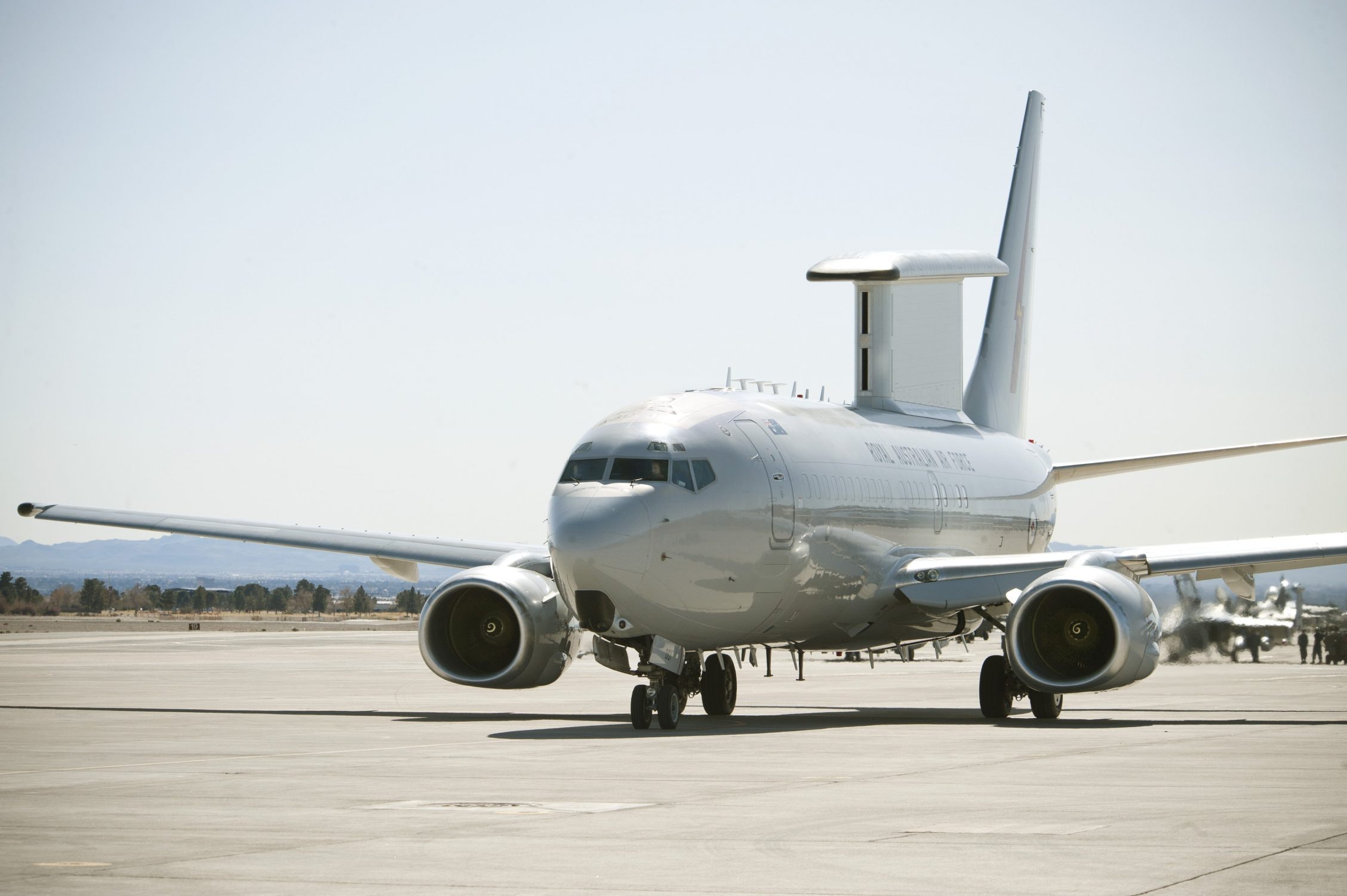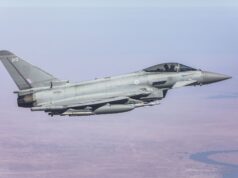NATO’s effort to replace its ageing E-3A Sentry fleet has been upended after the United States pulled out of the alliance’s planned purchase of up to six Boeing E-7 Wedgetails, leaving the programme without a strategic or financial anchor, the UK Defence Journal understands.
The Dutch Ministry of Defence confirmed that Washington withdrew from the AWACS replacement effort in July, prompting the Netherlands and several European partners to abandon the joint plan.
In a statement, The Hague said the remaining participants are now exploring alternative options and potential new partners, with the goal of fielding a successor capability before the current fleet reaches its 2035 end of life.
Dutch State Secretary for Defence Gijs Tuinman said the move highlighted a broader lesson for European airpower. “The withdrawal by the US in addition shows the importance of investing as much as possible in the European industry,” he stated. He added that the priority remains to introduce “other, quieter aircraft” before the E-3As retire, given long standing noise complaints from communities around Geilenkirchen Air Base.
The US decision followed growing concerns inside the Pentagon about escalating Wedgetail costs, delays and survivability in high threat environments. In July, the Department of Defense confirmed it was cancelling its own E-7 acquisition and shifting investment toward space based surveillance and additional E-2D Hawkeye aircraft.
NATO’s 14-strong E-3A fleet, operated from Geilenkirchen, provides the alliance’s core airborne early warning and battle management capability. The system is essential for monitoring airspace along NATO’s eastern flank and directing complex air operations. With the platform approaching obsolescence, momentum had been building for a collective replacement decision.
NATO Secretary General Mark Rutte, speaking at Geilenkirchen during a visit to Joint Force Command Brunssum, said the alliance’s replacement process continues despite the setback. “I will do everything to make sure that we speed up that process. It is important that we speed it up,” he told reporters.
The Dutch MoD stressed that AWACS aircraft remain critical to NATO operations. With the E-7 option no longer viable at alliance level, capitals must now decide whether to pursue national buys, develop a joint European design, or lean more heavily on space based and ground based surveillance.
The specifications of the E-7, which had been under consideration, include a 737 based airframe, CFM56 engines, a range of roughly 4,000 miles, and Northrop Grumman’s MESA radar. Whether these performance characteristics will shape the next phase of NATO’s search remains uncertain.














I understand that we need to replace the E-3, and we have been contracted to build two in the UK for the US, but in the words of Johnny Rotten, “Ever get the feeling you’ve been cheated?”
I don’t, I actually think it’s more important than ever the UK pushes on with E7 and increases the fleet. These aircraft will dominate any European air and ground war against Russia and controlling them means the UK will control that fight.
That’s lot of diplomatic and military weight the UK buys for a few billion. These are easily the most important element of any UK homeland defence as well. We should aim for 7 as a minimum now NATO is out.
NATO is pulling out because the USA pulled out. As has been made very very clear by the USAF and Congress the US didn’t pull out because there is anything wrong with the plane they pulled out because some idiot put a Fox News host with a drinking problem in charge of the Pentagon and he read it on a blog somewhere that AWACS is outdated.
Shades of Dale Browns Silver Tower. I cannot see the logic of space based. You would need a lot of them to cover the globe to ensure one is in the right place, they are almost impossible to defend. An anti sat will easily be the first shot fired by an adversary.
They haven’t even begun to design it.
It is a crazy decision
It already exists. The US has been using it since the 2010’s.
Not on the scale , resolution or power of a Space Based Radar would need
I’m pretty certain Space Command have written a pretty flashy business case on why spaced based radar is the answer to the AEW problem! But I believe they may have glossed over a few facts. The first is that any satellite, when placed in orbit remains largely in place. It does have some fuel to counter gravity’s inevitable pull. But not enough fuel to be used continuously to change its orbital height or path. This means that almost all satellites are easily tracked, but more importantly their tracks are predictable. Which gives an opponent a number of options of whether to wait for the satellite to pass over (geosynchronous) or avoid its scan area (geostationary). The only option to get round this initial problem for a full space based radar coverage, would be a massive constellation of satellites.
The next problem is having radar operating from space and looking down at the planet. Firstly there the small issue of dealing with the sun normal radiation, but also how it will cope with solar flares. Then when transmitting, which I believe would need to be from low earth orbit. You have the variances of the ionosphere to deal with. To make matters worse you are transmitting in to a body of air that gets denser as the signal travels.
The next problem is power and resolution. If the radar is operating say in the S band (2 to 4GHz), as this band is less affected by weather (rain, clouds etc) and can generate pretty good target resolution. Is placed in low earth orbit at say 300km height. We now choose to use an active electronically scanned array (AESA) radar. As they have very fast scan rates, can generate more compact beams and has better frequency hopping capabilities to overcome jamming etc. However for the radar to reach the ground, it will need a fairly large surface area, something in the order of 3m2. This may weigh somewhere in the region of 200 to 300kg. AESA arrays are not light, unless you go way up in the frequency band. But then those frequencies, the transmitted beam will struggle to reach the ground from that height, unless to start significantly increasing the output power. You could theoretically operate something like Leonardo’s Osprey 50 X-band (8 to 12Ghz) AESA radar. As that fairly light weighing up to 60ish kg, with the antenna array packaged in 200mm x 510mm x 140mm. It is supposed to have a detection range of around 200 nautical miles (370km). But the atmosphere will have a part to play in how this works, as X-band frequencies are significantly absorbed by the air. How much I couldn’t say, but as the air is getting denser the closer it gets to the ground (plus there are more particulates in the air the closer to the ground it gets). This will need to be compensated for by increasing the output power. Will the satellite be able to power the radar, as well as a very broadband data-link?
A peer enemy, should have no difficulties in building and fielding an anti-satellite missile, that could be either air or ground launched. The issue is that when hitting a satellite kinetically. Parts of it will be broken off and fly off in to their own orbital paths, adding to the large amount of debris that is already in orbit. There is a fairly good chance that the debris will hit other satellites. There is a non kinetic option, which uses high powered laser. The laser either cuts into the satellite and damages the internals, or would be aimed at the solar panels. Either way will knock out the satellite and make it effectively dead in space. I suspect the cost of building and using the laser, will be many leagues cheaper than building and storing replacement satellites, along with the cost of launching them in to orbit.
Aircraft based AEW offers significantly more flexibility over spaced based radar in a conflict. You could easily turn a crewed E7 in to an uncrewed one. But then you will need one mega pricey data-link that can handle the processed or raw radar data. You might as well accept the risk of keeping it manned. As there will be no interruptions of processing the data and coordinating the air picture.
A very good point, even at a very low orbit the radars will need a 200mile range just to reach low altitude aircraft. It takes a very powerful radar to reach 200 miles. It will have a very limited fidelity at that distance and require a lot of power.
To me low earth constellations will be very useful especially in providing advanced warning and tracking naval targets but they nest to be combined with airborne sensors and more importantly battle space mangers.
E7 holds a lot of people to do control not just early warning.
If I need something very high providing limited early warning then a solar powered pseudo satellite/ HALE drone is much cheaper.
Well stated Jim the US is making all manner of decisions that will cripple it in the years to come based on total ignorance by people ill suited to be in power or one eyed reliance on a single source they buy into as the ultimate and only expert worth listening too. Sadly it’s going to guarantee the dominance of China in many crucial technological fields and geographic influence that could cost the whole west dear especially if Farage gets in and follows similar backward madness.
As for this decision I guess it puts Saab in prime position. Certainly whatever the merits of space based sensing, to have no complimentary system is madness, especially as both Russia but especially China are researching, even deploying anti satellite systems that could seriously neutralise that capability. This seems to me to be a leftover self serving Musk policy whereby no doubt he is promising the Earth (makes a change from the Moon or Mars but hey do they ever learn) and that he can launch satellites faster than they can be taken out and will be capable of detecting a match being lit in the Kremlin or the exact moment Xi takes a dump. As usual the capability won’t meet the exorbitant claims, or even the far reduced capabilities before 2040 and counting, oh and the budget has quadrupled.
As an aside Starlink satellites are lasting about 5 months, rather less than he proposed, are in such a low Earth orbit to save money and because of yet more Starship limitations and worse still now there are fears that as they burn up they are depositing damaging chemicals into the upper atmosphere.
I am not sure why we are building E7 for the US when they have canceled their E7 purchase. Is the MoD just making stuff up. The two planes coincides perfectly with the two E7 radars the UK bought…
What is the story here…
No not at all. When our E7s are up an running (even if there’s only 3 of them!), it will still be the best AEW&C platform in Europe. I kind of understand where E-NATO is coming from, i.e. why are we putting more money in the US Treasury, when the current administration is being so perfidious? There is no direct competitor or platform that outperforms the E7. The Saab Globaleye, is a fantastic platform, but the Erieye ER radar it uses, even with the latest updates, is still sub par to the E7’s MESA radar. There simply is no substitute for carrying a radar that uses a massive surface area. As it means there’s more antenna area for receiving minute signals. But especially in the E7’s case using a more rectangular array, will generate a much rounder beam when transmitting, meaning there’s more power being directed in one direction.
The Saab Globaleye is the only suitable alternative to the E7 that is currently available. Airbus have a version of the C295 transport aircraft, with an Elta AESA radar, mounted in a mechanically rotating radome on top of the aircraft. However, this aircraft has a poor operating height performance and its performannce is not as good as the Globaleye. Airbus are working with India, where they will be converting 6 A321 airliners into AEW&C aircraft. India is manufacturing an indigenous AESA radar, likely an evolved version of the one fitted to their EMB-145 aircraft. But they are being ambitious with the performance of the radar, stating it will have a detection range of over 500km against stealthy targets. Airbus have also shown a A320/1 model of a aircraft carrying a Thales radar, mounted similarly to the Phalcon, with the antenna arrays mounted down the side of the fuselage.
One of the main issues is Boeing, any contract we are involved in with them, they always want a pound of flesh and then some. One of the reasons that Marshalls pulled out, was that they wouldn’t agree to let Marshalls be a design authority. All design change decisions had to go through Boeing, which added time and consultancy costs. Hence why Marshalls said the program for them was financially untenable. Compounding the problem was that STS didn’t have sufficient people or could recruit people with the right level of SQEP. Meaning they had to set up a separate training program, which is great in the long term, but incurs program delays in the short term.
E7 the best because you say so? you couldn’t know because details are not public. opinion is not fact.
but what we do know is that the E7 was designed/built in early 2000s and entered service in 2012. whereas Saab’s latest Erieye ER was introduced in 2020, so more modern than the GaAs MESA since it is a GaN based AESA. additionally getting upgrades from Boeing and Northrup Gruman will be complicated over the lifetime with only a few operators and no US to lead. the Bombardier Global 6000 has twice the range as the Boeing 737 NG, which is more than enough for European skies. not sure the few facts we do know support your thesis.
furthermore the US military cancelled the E7 and instead will be using a mix of other systems including the Hawkeye E2D. So NATO didn’t see any point in the E7 and cancelled as well. as a result, NATO will almost certainly order from Saab. Canada will very likely as well (esp Bombardier). But I guess you know more than all those decision makers. I’ll wager that if the UK was making its decision today that it would also choose Saab instead, and you know it.
Turkey fly these under the name “Peace Eagle”…but RAAF E7s have been doing AWACS work near Ukraine at NATOS request since July as well.
Worth noting the RAAF intends to replace its E7s over the next decade.
This is a spanner in the works 🔧 🤔
Any Idea where we store the Bull Dozers used to recycle these things ?
China
We have Bull Dozers???
Have to hope the US congress can give the SecDef a good slapping and make the US order more and more E-7, hopfully that gives NATO the chance to reconsider.
There’s always the possibility that the US will end up with E-7s, but NATO won’t.
What does that mean for our aircraft?
Have we just pissed a few billion up the wall again for nothing?
If so, as usual, the MIC is rubbing it’s hands together, billions pocketed, while the military goes without.
Yes?
The waste is very concerning, and the lack of investment in our AWACS fleet meant they had to go before a replacement was available! Not the first time the UK Government has carried out similar tactics. I can smell Nimrod all over again and with similar results.
I don’t see why this should impact our E7 buy. NATO already integrates multiple different awacs, E7s from Turkey, Greek EMB145, Italian CAEW.
We need AEW&C. Not a waste at all.
I dare say the bean counters will start asking afresh, do we REALLY need these assets now the US AND NATO are backing off from them but we need AEW&C in whatever form it comes. The alliance backing away from such a deal, when the E-3s are getting long in the tooth, is just really bad, especially if we think the US might be backing off from European defense. Neither we, nor eNATO have the satellite network the US has ….. and we don’t have any tactical assets like E-2D, so, E7 is the best option for both the UK and NATO, for now at least.
Exactly, even if the US concept is viable it isn’t for Europe itself which as you say would be years if at all from a similar adequate space based system. We need to be independent and flexible.
I don’t think so as AUS are the leaders on E7 anyway – they are spiral developing theirs.
So there’s still hope then. OK.
In a way as Jim says this is an opportunity for us, as we are now the only european nation purchasing the strategic AWACS. So we have more leverage in NATO strategy and are even more indispensable as part of a US-less defence.
We should now double down and get the extra 2 airframes, as the US conversions won’t be happening.
Do you see this government actually doing that?
It seems like the decision makers are so weak willed that it would be possible for a single advisor who knows their mind to swing the whole of Defence onto completely different paths, and making sensible decisions like that could be one of them.
Problem is, it could just as easily go the other way.
the australians use them. why would we scrap ours just ‘cos NATO or the USAF may not use them – doesn’t make it a bad aircraft.
Turks use them too of course and do operate them across Europe on occasion.
Anybody else thinking that if the UK took over the 2 to be converted here, we would have total 5 for the RAF as originally planned?
Now, where are the extra 2 radar systems we ordered??
Probably being bolted to the 2 USAF aircraft 🙄
That would be my assumption as well..
Well a good day for Saab
It doesn’t make sense, the us did not build the RAAF wedgetails or our, Saab version not quite the same spec. Why design from scratch that at least 15 years away.
I’m sure Boeing and Lockheed Martin would be more than happy to accommodate an order of this magnitude
Boeing have big enough issues with standard production before going off doing specials.
The whole reason UK are doing the mods for USA is that Boeing don’t have the capacity to do it and that UK has invested in spinning up that capacity and capability.
When the UK reduced its wedgetail order from 5 to 3 that the MoD still had to pay for all 5 radars.
House of Commons Library report, “RAF E-7 Wedgetail programme”, quote “The MOD has, however, had to continue with the separate purchase of five Northrop Grumman manufactured multi-role electronically scanned array radar (totalling approximately £300 million)”
So will the UK get back its ALL its £300 million ?
We don’t know for sure, but i suspect they have been flogged to the US as part of the coincidentally also 2 that would be built in the UK.
So does NATO purchase it’s own military equipment?
Yes by joint NATO procurement organisations set up for particular projects and composed of personnel drawn from all the contributing (financially) Nations but in the case of aircraft they have to be registered with one European country recognised by EASA. The NATO E3As are all registered in Luxembourg and I belive the NATO MRTTs are registered in Holland.
I believe that would make Luxembourg the operator of the world’s fourth or fifth largest AEW&C fleet, behind the USAF/USN, PLAAF/PLANAF and JASDF.
They have a few common purchases, including the C17. Basically large stuff that is too expensive for one member to buy but would be benefical to be shared in the event of a war.
There could be a silver lining for the RAF. If the US SECWAR decides, against senior USAF advice, that a space based solution is the best for the USAF (if ony to save SECWAR’s face) the two new build ‘prototype E7s’ would be surplus to US requirements and I could envisage some sort of deal with Boeing/USAF especially if the UK ‘loans’ and installs the their two spare MESA radars to the USAF for ‘protoype’ evaluation. Alternatively, if the USAF E7 evaluation is successful and the USAF decided to open a production line for the USAF E7s in the next 2-3 years the ‘prototypes’, could be refurbished and sold back to the UK with their fitted RAF radars. The USAF rarely put prototypes into service and use them for through life system developement so this could be an avenue for the RAF to get the urgently needed 2 additional E7s at time when the RAF’s support and training capability is in a position to absorb additional airframes. Yes the new build US E7s would be a different 737 varient but that will likely be the case if the RAF try and procure 2 second hand 737’s with all the certification problems with the MAA which that thows up.
I suspect not, i suspect they will just end up in the boneyard in the hope that the post trump goverment might reconsider the decision.
So basically. Without the Americans, our EU NATO partners can’t afford E7.
Not sure that is so much the driver. I suspect its more well if the US is not going to buy it and bring down the cost, then we might as well go for a domestic solution rather than sending funds to a US company. Time will tell, as sooner or later they are going to need to make an order to replace the current aircraft.
This story may already be out of date, on Wednesday the US Congress added nearly $200 million for the USAF E-7 Wedgetail, despite the Trump administration’s attempt to kill the program. This obviously matter’s to the MOD as it can probably only afford to go back to 5 E-7’s if it gets economy of scale savings from piggybacking a NATO buy, which in turn will effectively piggyback the USAF’s.
Well come Jan it’s all emphasis on build up for the Mid terms in Congress at least so I hear a few days back so there’s a good chance that the programme in the US can be saved, as we have seen when it comes to defence Congress is much more inclined to defy the Executive than on other matters anyway and it looks like even those other matters are going to become rather more compelling as time passes on matters so difficult to predict anything more than a month or so ahead over the pond. Meanwhile a European solution may well be a better option now anyway on such a crucial capability.
The UK has already spent over £2 bn on E-7 – for just 3 aircraft. These are now vying with the American B-2 and VC-24B as the most expensive aircraft ever built.
I meant to add that the contract with prime contractor Boeing for 5 aircraft proved to be legally iron-clad. Ditto with Northrop Grumman for the radars. Reducing the buy from 5 to 3 aircraft thus didn’t save a penny with them.
Well hello Kawasaki!
About time we ditched American as much as possible and either built in house with, for example, Airbus platforms or tie up with Japan, South Korea, Taiwan and ANNA – Any NATO not American.
Australia will buy the next two – thank you.